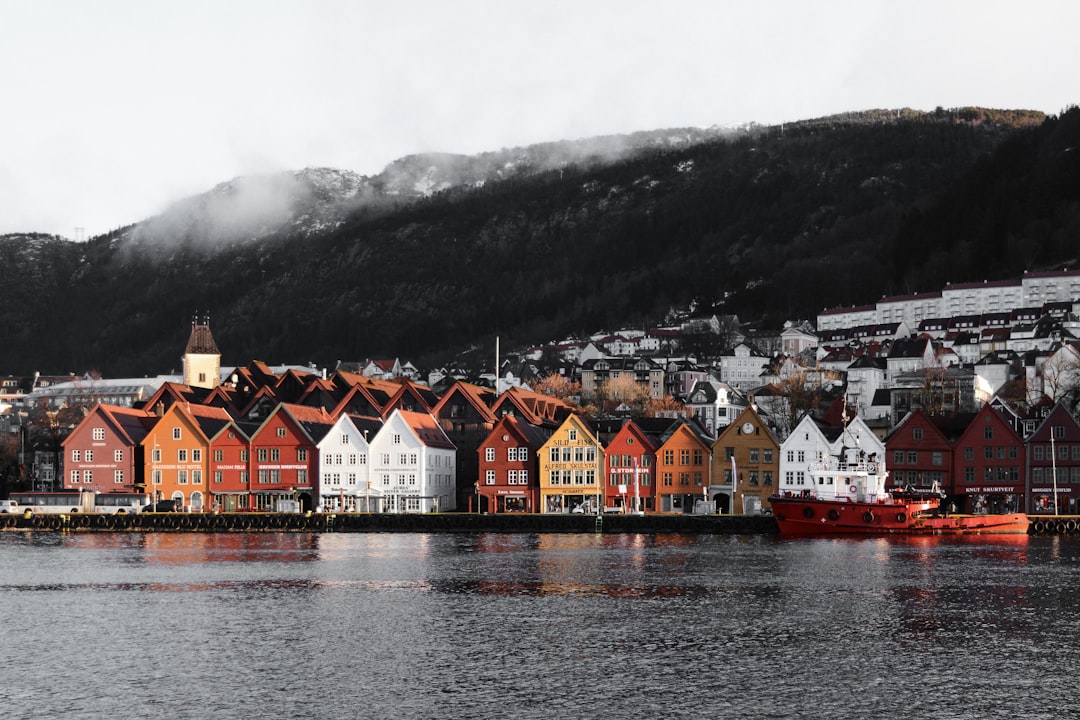The culinary traditions of Norway during the festive season are steeped in history, with two dishes standing out as quintessential symbols of Christmas: pinnekjøtt and ribbe. Pinnekjøtt, which translates to “stick meat,” has its roots in the western regions of Norway, where it was traditionally made from lamb or sheep. The origins of this dish can be traced back to the necessity of preserving meat in a country where winters are long and harsh.
The method of drying and salting the meat allowed families to store it for extended periods, ensuring sustenance throughout the cold months. Over time, this practice evolved into a cherished Christmas tradition, with families gathering to enjoy pinnekjøtt as a festive meal. On the other hand, ribbe, or pork belly, has its own rich history that reflects the agricultural practices of Norway.
This dish is often associated with the eastern parts of the country and has been a staple during Christmas celebrations for generations. The preparation of ribbe involves a careful process of seasoning and slow-roasting, which enhances its flavour and tenderness. Both pinnekjøtt and ribbe have become integral to Norwegian Christmas celebrations, symbolising not only the bounty of the land but also the importance of family gatherings during this special time of year. Your journey to a smooth relocation starts here. Talk one-on-one with a Norway Relocation specialist and turn your plan into a reality.
Summary
- Pinnekjøtt and Ribbe are traditional Norwegian Christmas dishes with deep historical roots, reflecting the country’s rich culinary heritage.
- The preparation process for Pinnekjøtt involves steaming the cured and dried lamb ribs, while Ribbe is made by roasting pork belly with crispy crackling.
- Pinnekjøtt is made from cured and dried lamb ribs, while Ribbe is made from pork belly, resulting in distinct flavours and textures for each dish.
- Pinnekjøtt is typically seasoned with a blend of juniper berries and other herbs, while Ribbe is seasoned with salt, pepper, and sometimes cloves for a festive touch.
- Pinnekjøtt is traditionally served with mashed swede and potatoes, while Ribbe is accompanied by sausages, red cabbage, and lingonberry sauce, adding a variety of flavours to the meal.
The Preparation Process: Contrasting the Methods of Cooking Pinnekjøtt and Ribbe
The preparation methods for pinnekjøtt and ribbe highlight the distinct culinary traditions that characterise Norwegian Christmas feasts. Pinnekjøtt is typically prepared by soaking the salted meat in water for several hours to remove excess saltiness. Once adequately soaked, the meat is placed on a bed of birch sticks in a large pot, which is then filled with water and simmered for several hours.
This unique cooking method not only infuses the meat with a subtle smokiness but also allows the fat to render down, resulting in tender, flavourful morsels that are often served with mashed potatoes and rutabaga. In contrast, ribbe requires a different approach to achieve its signature crispy skin and succulent meat. The preparation begins with scoring the skin in a criss-cross pattern, which helps render the fat during cooking.
The ribbe is then seasoned generously with salt and pepper before being placed in an oven to roast slowly. This method allows the skin to become beautifully crisp while keeping the meat juicy and tender. The contrasting techniques used for these two dishes reflect the diverse culinary heritage of Norway, showcasing how regional ingredients and traditions shape festive meals.
The Main Ingredients: Comparing the Cuts of Meat Used in Pinnekjøtt and Ribbe

When it comes to the main ingredients, pinnekjøtt and ribbe differ significantly in terms of the cuts of meat used. Pinnekjøtt is primarily made from lamb or sheep, specifically from the ribs or legs. The choice of meat is crucial, as it directly impacts the flavour profile of the dish.
Traditionally, only high-quality cuts are selected, ensuring that the final product is both tender and rich in taste. The use of lamb or sheep reflects Norway’s pastoral heritage, where these animals have been raised for centuries in the rugged landscapes. Ribbe, on the other hand, is derived from pork belly, a cut known for its layers of fat and meat that contribute to its rich flavour.
This cut is particularly popular during Christmas due to its ability to absorb seasonings and its versatility in cooking methods. The combination of fat and meat in ribbe creates a delightful contrast in texture, making it a favourite among many Norwegians during festive gatherings. While both dishes celebrate different types of meat, they each embody the essence of Norwegian cuisine—simple yet deeply satisfying.
Flavours and Seasonings: Understanding the Different Spices and Herbs Used in Pinnekjøtt and Ribbe
The flavours and seasonings used in pinnekjøtt and ribbe further distinguish these two beloved dishes. Pinnekjøtt is typically seasoned with coarse sea salt before being cooked, allowing the natural flavours of the lamb or sheep to shine through. Some families may also add a touch of black pepper or other spices to enhance the taste, but the focus remains on preserving the integrity of the meat itself.
The simplicity of seasoning reflects a traditional approach to cooking that prioritises quality ingredients over complex flavour profiles. In contrast, ribbe often features a more robust array of seasonings. In addition to salt and pepper, many cooks will rub the pork belly with a mixture of spices such as garlic powder, thyme, or even juniper berries to elevate its flavour.
The scoring of the skin also allows for seasonings to penetrate deeper into the meat during roasting, resulting in a more complex taste experience. This emphasis on seasoning showcases how regional preferences influence culinary practices in Norway, with each family adding their unique touch to these festive dishes.
Side Dishes and Accompaniments: Exploring the Traditional Pairings for Pinnekjøtt and Ribbe
No Christmas feast in Norway would be complete without an array of traditional side dishes that complement pinnekjøtt and ribbe. For pinnekjøtt, one of the most common accompaniments is kålrabistappe, a creamy mash made from rutabaga and potatoes. This dish not only balances the rich flavours of the salted meat but also adds a comforting element to the meal.
Additionally, boiled potatoes are often served alongside pinnekjøtt, providing a neutral base that allows diners to fully appreciate the unique taste of the lamb. When it comes to ribbe, traditional side dishes include red cabbage and sauerkraut, both of which add a tangy contrast to the richness of the pork belly. Many families also serve potatoes roasted in the drippings from the ribbe, allowing them to absorb all the delicious flavours from the meat.
Lingonberry sauce is another popular accompaniment that adds a sweet-tart element to each bite, enhancing the overall dining experience. These side dishes not only enrich the flavours of pinnekjøtt and ribbe but also reflect Norway’s agricultural bounty during the festive season.
Nutritional Values: Analysing the Health Benefits and Nutritional Content of Pinnekjøtt and Ribbe

As with any traditional dish, understanding the nutritional values of pinnekjøtt and ribbe can provide insight into their health benefits as part of a balanced diet. Pinnekjøtt is rich in protein due to its lamb content, making it an excellent source for those looking to maintain muscle mass or support overall health. Additionally, lamb is known for its high levels of essential vitamins and minerals such as zinc, iron, and vitamin B12, which are crucial for various bodily functions.
Ribbe also offers nutritional benefits, particularly when prepared with care. While it is higher in fat than pinnekjøtt due to its pork belly composition, this fat can provide energy and aid in nutrient absorption when consumed in moderation. Pork is also a good source of protein and contains important nutrients like thiamine and selenium.
However, it is essential to balance these rich dishes with plenty of vegetables and whole grains to ensure a well-rounded diet during the festive season.
Regional Variations: Investigating the Different Approaches to Pinnekjøtt and Ribbe Across Norway
Norway’s diverse geography has given rise to regional variations in how pinnekjøtt and ribbe are prepared and enjoyed across the country. In western Norway, where pinnekjøtt originated, families often adhere closely to traditional methods passed down through generations. Here, you might find variations that include different types of wood used for smoking or drying the meat, which can impart unique flavours depending on local resources.
Conversely, ribbe has seen variations across different regions as well. In some areas, particularly in eastern Norway, it is common to serve ribbe with a crispy crackling skin that contrasts beautifully with tender meat beneath. In other regions, cooks may experiment with additional spices or marinades that reflect local tastes or available ingredients.
These regional differences not only highlight Norway’s culinary diversity but also showcase how local traditions shape festive meals throughout the country.
Cultural Significance: Discussing the Symbolism and Importance of Pinnekjøtt and Ribbe in Norwegian Christmas Celebrations
Pinnekjøtt and ribbe hold significant cultural importance within Norwegian Christmas celebrations, symbolising not just sustenance but also togetherness and tradition. The act of preparing these dishes often involves family members coming together in kitchens across Norway, reinforcing bonds through shared culinary experiences. For many Norwegians, these meals evoke memories of childhood celebrations filled with laughter and joy.
Moreover, both dishes represent a connection to Norway’s agricultural heritage. They embody a respect for local resources and traditional methods that have been honed over centuries. As families gather around tables adorned with pinnekjøtt or ribbe during Christmas feasts, they partake in a ritual that transcends generations—a celebration not only of food but also of cultural identity.
Serving and Presentation: Tips for Serving Up a Perfect Plate of Pinnekjøtt and Ribbe
When it comes to serving pinnekjøtt and ribbe at your Christmas table, presentation plays an essential role in enhancing the dining experience. For pinnekjøtt, consider arranging slices on a large platter alongside generous servings of kålrabistappe and boiled potatoes for an inviting display. Garnishing with fresh herbs can add a pop of colour while elevating visual appeal.
For ribbe, presentation can be equally important; serving it on a wooden board or rustic platter allows guests to appreciate its crispy skin while showcasing its succulent interior. Pairing it with vibrant sides like red cabbage or lingonberry sauce not only adds colour but also creates an enticing contrast on the plate. Thoughtful presentation can transform your festive meal into an unforgettable experience for family and friends alike.
The Great Debate: Examining the Ongoing Discussion and Controversy Surrounding Pinnekjøtt and Ribbe
The debate surrounding pinnekjøtt versus ribbe is one that sparks passionate discussions among Norwegians each holiday season. Some families staunchly defend their preference for pinnekjøtt as the quintessential Christmas dish, citing its rich history and unique preparation methods as reasons for its superiority. Others argue that ribbe’s versatility and flavour make it an equally deserving contender for holiday tables across Norway.
This ongoing discussion often leads to friendly rivalries among families who have their own traditions regarding which dish should take centre stage during Christmas feasts. Ultimately, this debate reflects not only personal preferences but also regional identities within Norway’s diverse culinary landscape—a testament to how food can evoke strong emotions tied to culture and heritage.
Navigating the Choice Between Pinnekjøtt and Ribbe for Your Norwegian Christmas Feast
As you prepare for your own Norwegian Christmas feast, navigating between pinnekjøtt and ribbe can be both exciting and challenging. Each dish offers its unique flavours, preparation methods, and cultural significance that contribute to an unforgettable holiday experience. Whether you choose to embrace tradition by serving pinnekjøtt or opt for ribbe’s comforting richness, what truly matters is gathering around the table with loved ones.
Incorporating either dish into your festive celebrations will undoubtedly create lasting memories filled with warmth and joy—qualities that define Norwegian Christmas traditions at their core. As you savour each bite alongside traditional accompaniments like kålrabistappe or red cabbage, you will find yourself immersed in a culinary journey that celebrates not just food but also family ties that bind us together during this special time of year. For those considering relocating to Norway or immersing themselves further into Norwegian culture through language learning or community engagement, organisations like Norway Relocation Group can provide invaluable assistance in navigating this transition smoothly.
Additionally, enrolling in Norwegian courses at NLS Norwegian Language School in Oslo can enhance your understanding of local customs while helping you connect more deeply with your new home—making your experience all the more enriching as you partake in these cherished culinary traditions during Christmas celebrations.
Register for a Norwegian class at the NLS Norwegian Language School now!

